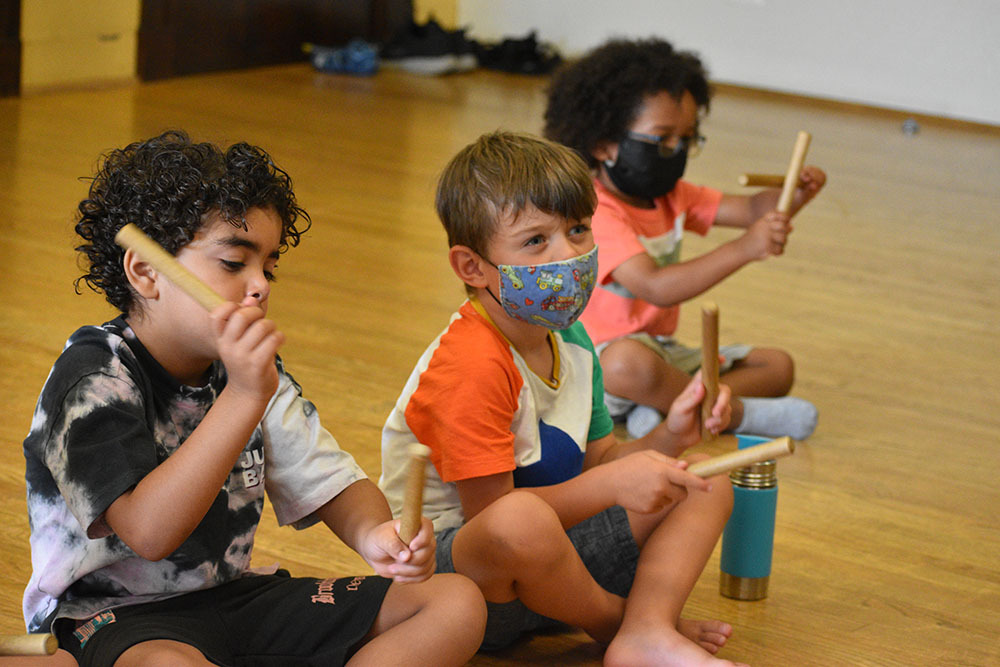Most experts agree that the infant and toddler brain is like a sponge.
Young children constantly process new information and acquire new skills. Still, does it make sense to enroll your young child in one of the many classes available for little ones?
According to Claire Lerner, parenting resources director for Zero to Three, a nonprofit advocacy group, a well-run class can benefit both parent and child, providing a first group learning experience and a chance to discover and explore.
Several Delaware Valley programs offer instruction for kids age 3 and younger. Here’s what instructors advise about choosing a class and what you’ll need to do to make the experience a success.
Choosing the Right Class
Choices not only include little-kid favorites such as art, dance and music, but also swimming, gymnastics, writing and even world languages. Dale Miller, founder of Into The Swim, a swimming school with several South Jersey locations, gives this advice: “You should choose a class that offers experience over anything else, and you must agree with the philosophy of the teachers. The ratio of teachers to children is exceptionally important.”
Look for well-established schools and programs that have developed a reputation for nurturing the children in their care. Talk to teachers to get a sense of their philosophies. If you feel comfortable with the class, your child is much more likely to feel comfortable too.
Visit a range of classes to see what works for you and your child. Observe how your child responds. “If she’s kicking and screaming before every class, she’s probably not ready,” Miller jokes. On the other hand, don’t mistake a child’s inactivity for disinterest, says Allison DeSalvo, pro– gram-ming director of The Creative Living Room, which provides a variety of classes in Swarthmore, PA.
“It’s okay to let the baby be still and just observe you doing the actions,” she says. Often, this process is necessary for the child to become comfortable with both the surroundings and the activity.
What are the Benefits?
Studies indicate toddler classes pay off later. A 2007 study in the Early Childhood Education Journal concludes that there is a strong correlation between music education and increased literacy. A 1999 study by the Arts Education Partnership demonstrates a clear link between early art education and improved academic performance.
While class providers emphasize academic benefits down the road, many also focus on less quantifiable advantages. Marcella Summerville, director of the Spanish Workshop for Children in Blue Bell, PA, believes that exposure to foreign languages makes children more open-minded and receptive to new ideas, people and environments.
Kim Fink, a founder of Makin’ Music Rockin’ Rhythms, a music school with more than 20 area locations, says her classes impart skills such as sharing, listening and getting along with others, in addition to providing a strong musical foundation.
Into the Swim’s Miller says the primary benefit of his classes is potentially vital: water safety. “Everybody needs to know how to do a proper freestyle,” he says. “Safety alone is a big enough reason to take swim lessons.”
DeSalvo cites several benefits for children who take art, music and dance classes, but she also says parents gain from attending classes with their children. “Role modeling by the teacher can be very beneficial for the parent,” she says. “Parents have the opportunity to learn how to incorporate different activities into their own routine with their child.”
Classes, like other organized parent-child activities, guarantee quality time with your child, no small benefit in today’s busy world.
The Parent’s Role
Most classes depend on parents to be present and to participate. Doing so increases your child’s comfort level and gives him a trusted adult role model.
In addition, instructors emphasize that for a child to get the most from his class, his parents need to foster active, creative play at home. Most art, music and dance classes show parents how to extend classroom activities into their home routines. Singing songs with your child or giving her the materials and space to explore her artistic interests builds on the class experience.
No matter which class you choose, consistency is the key to a positive experience. Teachers tell stories of parents who only bring their child to a weekly class once a month, then question why the child has made no progress.
Young children’s learning requires repetition. They must be exposed to the skill they are being taught — whether it’s Spanish, swimming or singing songs — for an extended time before they will truly grasp it.
Creative experiences are essential to a child’s cognitive development, and a well-run class can expand those experiences. “Play is a child’s work,” says DeSalvo. Who knew work could be so much fun?
Amos Huron wrote this article as a MetroKids editorial assistant.






